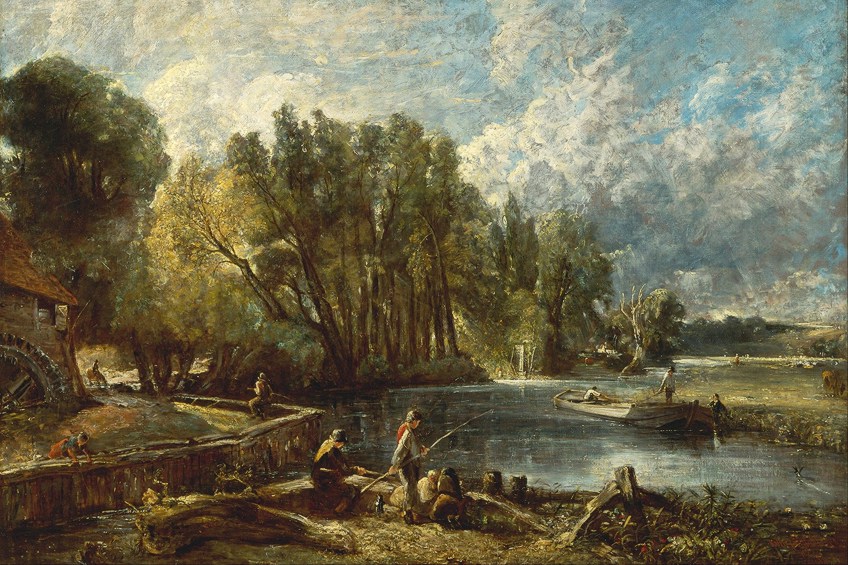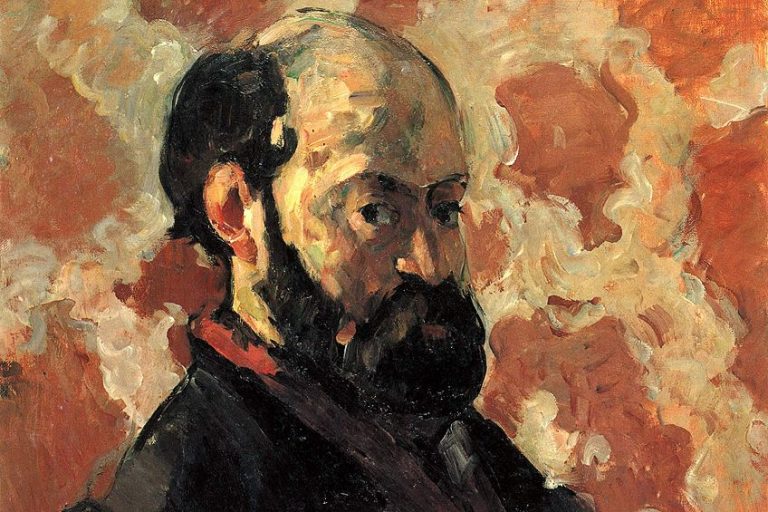John Constable – The Life and Works of John Constable the Artist
John Constable was an English painter whose life spanned from the late 1700s until the early 1800s. He helped to revolutionize the art of landscape painting and elevate it to the respected art form it is today. Although he was not successful during his time, he is now thought to be one of the most famous artists in English history.
Artist in Context: Who Was John Constable?
John Constable was an artist who lived a fairly peaceful existence in the English countryside. Although the life he lived was simple, the impact his art made was profound. This section will give an introduction to John Constable’s biography as well as an insight into his career.
| Date of Birth | 11 June 1776 |
| Date of Death | 31 March 1837 |
| Country of Birth | England |
| Associated Art Movements | Romanticism |
| Genre/Style | Landscape Painting |
| Mediums Used | Drawing, Painting |
| Dominant Themes | Pastoral life, Nature |
Early Life
John Constable was born on 11 June 1776 in a small village in Suffolk, England. He came from a fairly wealthy family due to the fact that his father was a corn merchant. During those times, it was typical that the oldest son would take charge of the family business once their father was no longer able to work. Constable was only his father’s second son, but his older brother was severely mentally handicapped and thus, unfit to take over.
Therefore, his father always hoped that it would be John Constable who would enter the family business.
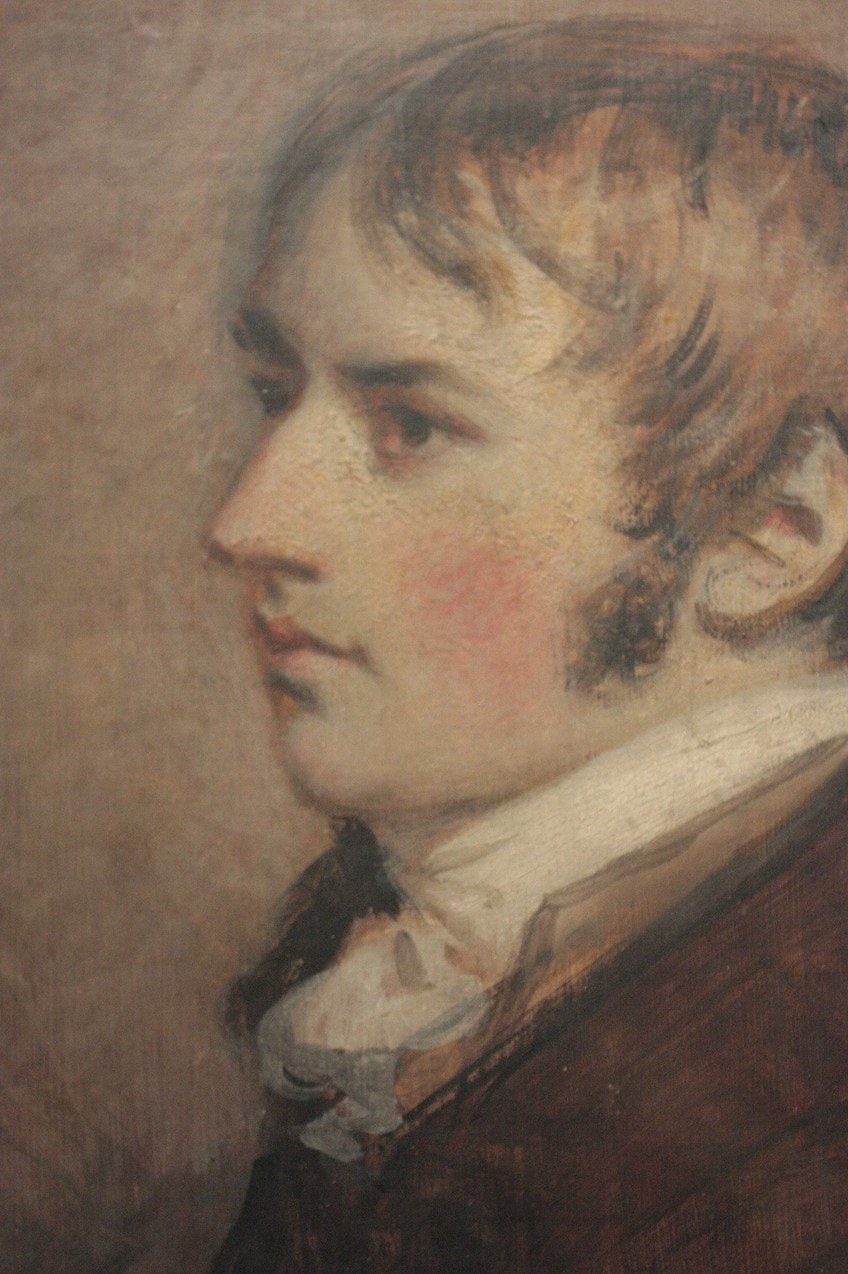
Whilst Constable did work for his father for a time, this was not his dream. Although many advised him against a career in art, his passion was too great to heed them. Realizing that his son could not be deterred, Constable’s father allowed him to enroll in the Royal Academy Schools at the age of 23.
Here, he studied drawing and painting, as well as learned about famous artists such as Claude Lorrain, who would influence his art.
Constable enjoyed painting the rural scenes that surrounded his family’s home en plein air. However, back then, landscape painting was not the esteemed art form it is today. Even those who favored Romanticism painting, which often focused on landscapes, preferred the landscapes of more exotic lands. Although Constable tried to paint scenery from other parts of England, he was always drawn back to his home county of Suffolk. For this reason, the area is now known as “Constable Country”.

Constable the Artist
John Constable’s art was not an instant success. In fact, he struggled to sell his paintings for the majority of his career, and even then, they would not be sold for much. However, he still kept showing his paintings at exhibitions such as the Royal Academy in the hopes that they would one day sell.
Thus, in order to earn money, he often painted portraits.
Back then, there were no cameras, so these were highly in demand. Although his portraits, such as Portrait of John Fisher, Archdeacon of Berkshire (1816) and Mrs. James Pulham, Sr. (1818), were highly praised, Constable found them tedious.
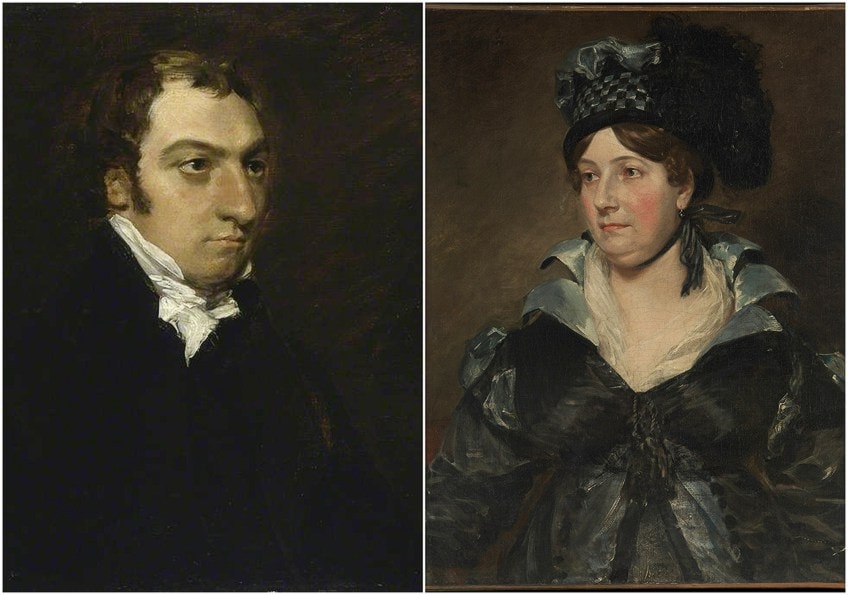
John Constable’s paintings began gaining recognition around 1817. Many applauded him for works such as Flatford Mill (Scene on a Navigable River) (1816-1817), but his paintings were still not selling. His first painting was sold for 100 guineas in 1819.
This not only allowed him to enter the Royal Academy as an associate, but also gave him a level of financial stability that he had not known in his career before.
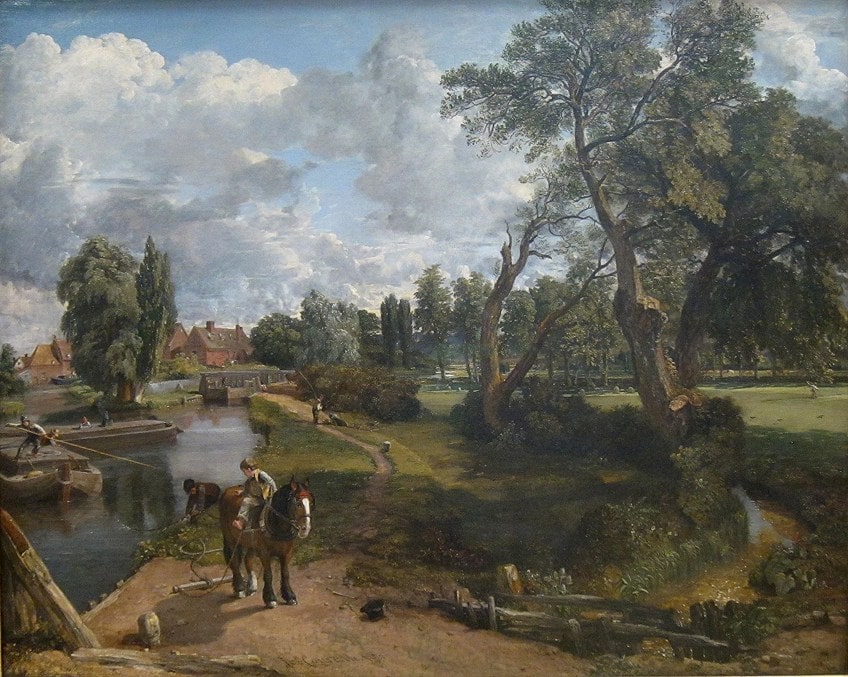
The year 1821 would mark another event in Constable’s career. On a visit to England, the French artist Théodaore Géricault saw John Constable’s painting The Hay Wain (1821). He thought it was magnificent and expressed his admiration to his French peers.
Many were so inspired they began painting their own countryside in the same manner as Constable.
In 1824, the Anglo-French mogul John Arrowsmith John Constable’s paintings The Hay Wain and View on the Stour near Dedham (1822). Arrowsmith had them both displayed at the Paris Salon of 1824. The two paintings shown at the Salon even received a gold medal from Charles X of France himself. John Constable’s art received rave reviews in France. He sold more paintings here in a few years than he did in England throughout his entire career.

Marriage and Children
John Constable fell in love with Maria Elizabeth Bicknell when they were children. However, Maria’s family was very wealthy and did not believe that Constable was of high enough status to marry her. When Constable decided to become an artist, Maria’s family threatened to repudiate her if they got married. Even Constable’s own parents also advised him against marriage until he could support a family financially.
Unfortunately, both of Constable’s parents died soon after one another. Thus, he inherited one-fifth of the family corn business.
This allowed the couple to get married in 1816 without fear of becoming impoverished. The two had a very happy marriage, producing seven children. However, sadly, three of the seven children (John, Alfred, and Emily) died whilst they were all quite young. For unknown reasons, his other three children Maria Louisa, Isabel, and Lionel did not marry or have any children of their own. The only child to give the artist grandchildren was his son Charles.
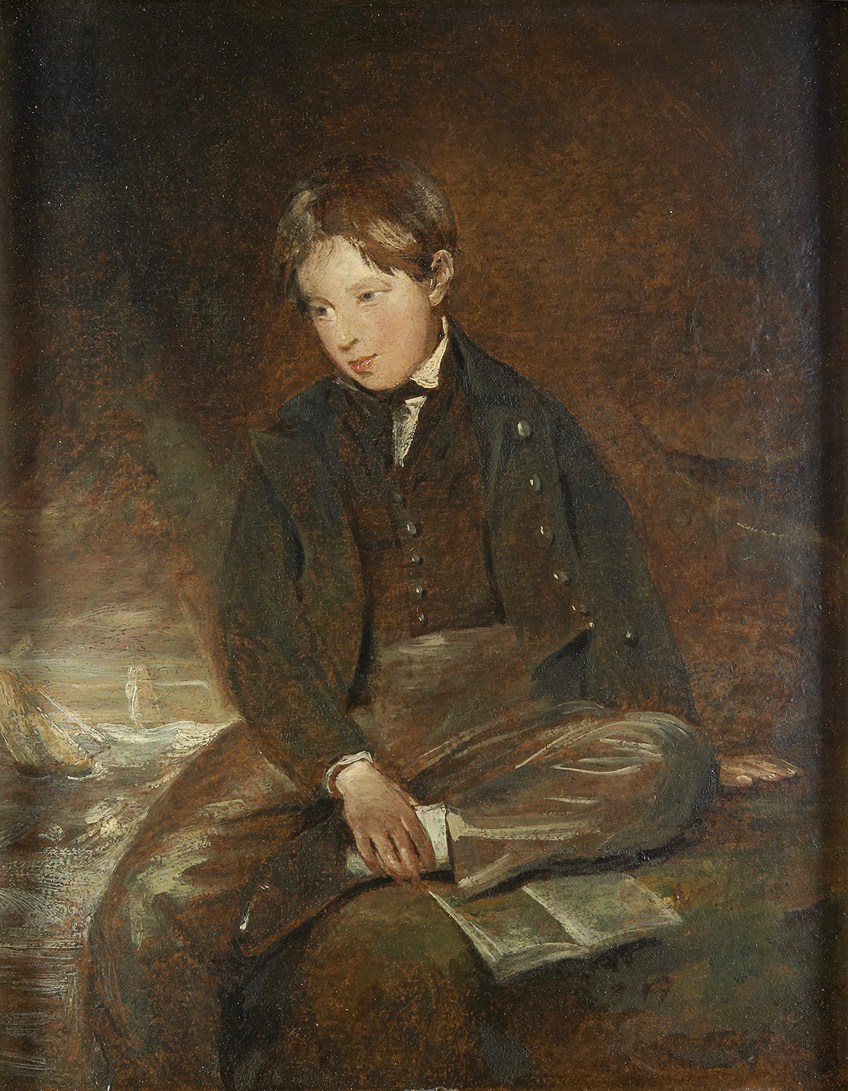
In 1824, Constable’s wife Maria fell ill. They believed it to be the early onset of tuberculosis. Thus, in order to try to benefit Maria’s health, the family moved to the seaside town of Brighton. They lived here for four years, however, Maria eventually succumbed to consumption.
This left Constable to raise his children alone, many of whom were still very young.
Maria’s death sent Constable into a deep depression. He expressed this sadness in many areas of his life, refusing to wear any color but black and painting only gloomy scenes. John Constable’s art during this time was highly emotive. One can see evidence of this in paintings such as Hadleigh Castle (1829) and Salisbury Cathedral from the Meadows (1831).
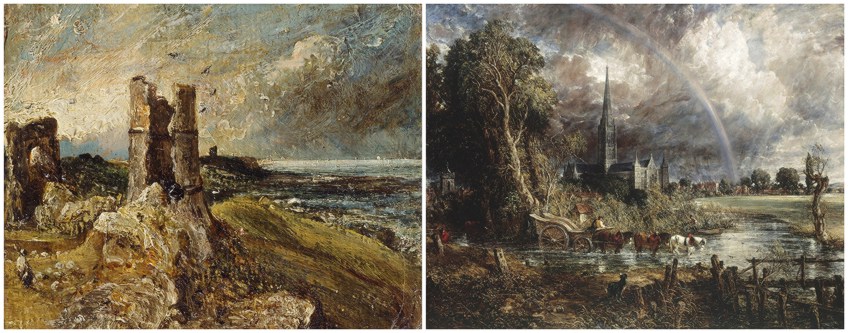
Final Years
In 1831, John Constable became a guest lecturer at the Royal Academy as well as the Royal Institution. His students were said to have loved him and his lessons. He lectured primarily on his approach to landscape painting, as well as some history of the genre.
His most pressed point was that artists must paint from life, not their imagination, as well as that art, like many things in life, is something that one must study and practice in order to become good at it.
Constable died on 31 March 1837 of coronary infarction. He was only 60 years old at this time. His body was buried next to that of his wife Maria. The St John-at-Hampstead Church, where the couple was buried, would become the place of their family tomb. All of their children would later be laid to rest here as well.
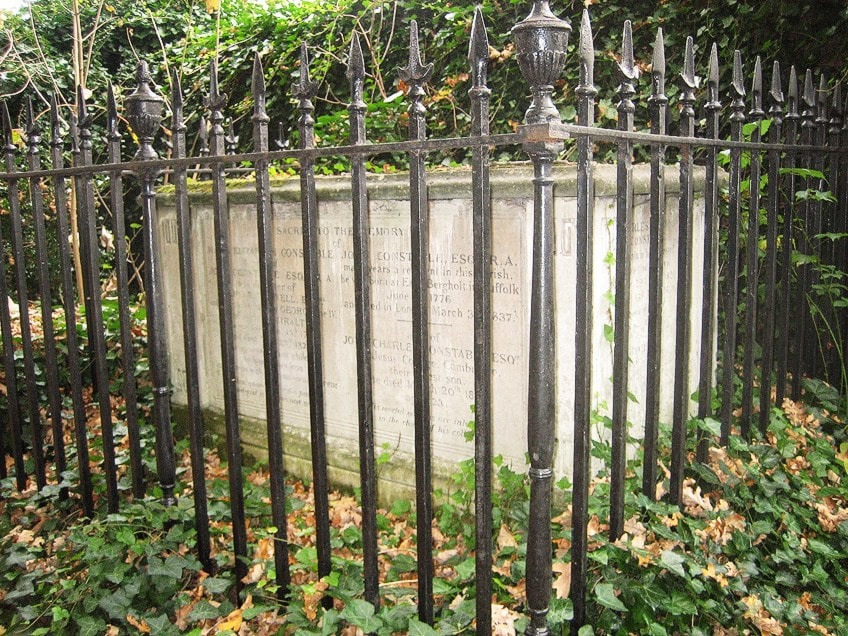
Artistic Characteristics of John Constable
John Constable’s art was groundbreaking and unique at the time of its creation. His paintings showcased novel techniques and color schemes that were not often utilized. This section will take a closer at some of the traits which defined his personal style.
Composition
John Constable always painted nature exactly how he saw it, capturing its raw beauty. During this time, it was customary for artists to alter the scene they painted in order to refine and perfect it. They would edit out fallen leaves or neaten up hedges. Constable, on the other hand, was all about conveying a realistic landscape with all of its quirks intact.
Constable also liked to create compositions that unified nature and man.
This desire for harmony between humanity and the elements was typical of Romantic painters. Constable would use a combination of manmade elements, such as building or farming equipment, and untamed landscapes to create interest. Some of his most famous paintings, such as The Hay Wain (1821), showcase this.
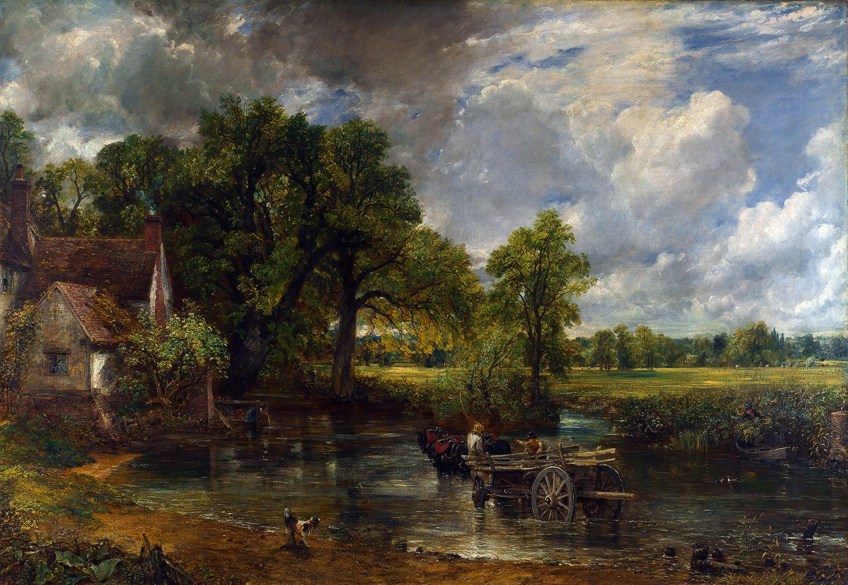
Color and Light
John Constable’s use of rich, vibrant colors in his landscapes was highly unique. Until then, landscapes were only ever painted using dull, sepia tones. It is unknown whether this was intentional or whether the varnish used to seal them diluted the colors. Constable deviated from this tradition, choosing to paint his landscapes in rich, complex colors instead.
Constable wanted his paintings to convey what he saw as realistically as he possibly could.
This meant that he had to experiment with new techniques of showing light and motion. This was particularly the case when painting water or the shadows cast by trees. To do this, he would add white highlights to his paintings, something that was fairly out of the ordinary for the time. This can be seen in paintings such as Dedham Lock and Mill (c. 1818/1820) as well as Water Meadows near Salisbury (1820).
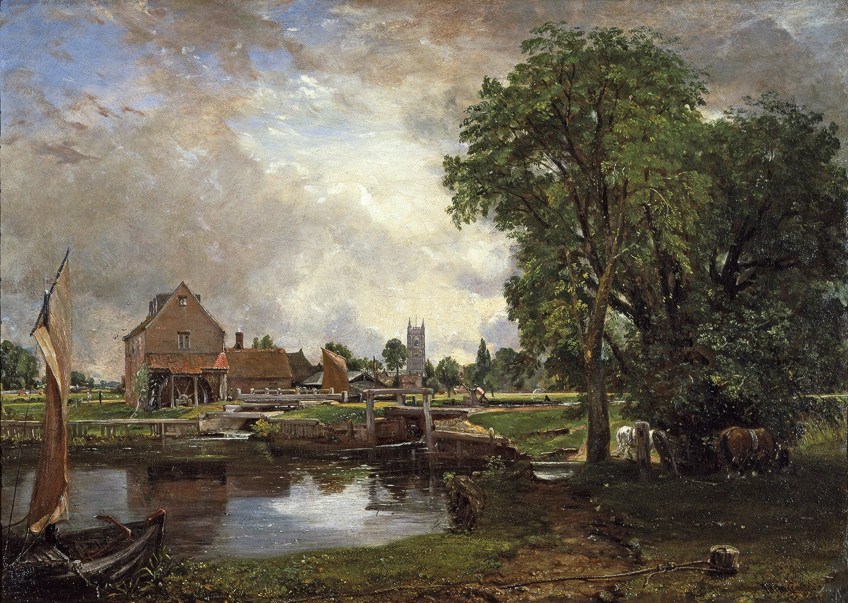
The Forefather of Impressionism
Although John Constable was a Romanticism painter, many of his notable art characteristics bear resemblance to the Impressionists who came later. Firstly, the most visible similarity between Constable’s style and the Impressionists is his use of the impasto technique. The impasto technique is when an artist applies a thick layer of paint in which their brushstrokes can be seen.
This was not commonly used in Constable’s time and thus, was not very well received.
Another similarity between Constable’s work and that of the Impressionists was his love of en plein air painting. He loved to paint the countryside surrounding his home. At this time, it was also highly unusual to paint landscapes that contained human figures. This was something Constable loved to do and can be seen in many of his paintings such as Stratford Mill (1820) and Marine Parade and Old Chain Pier (1826). The Impressionists later employed figures in their landscapes regularly.
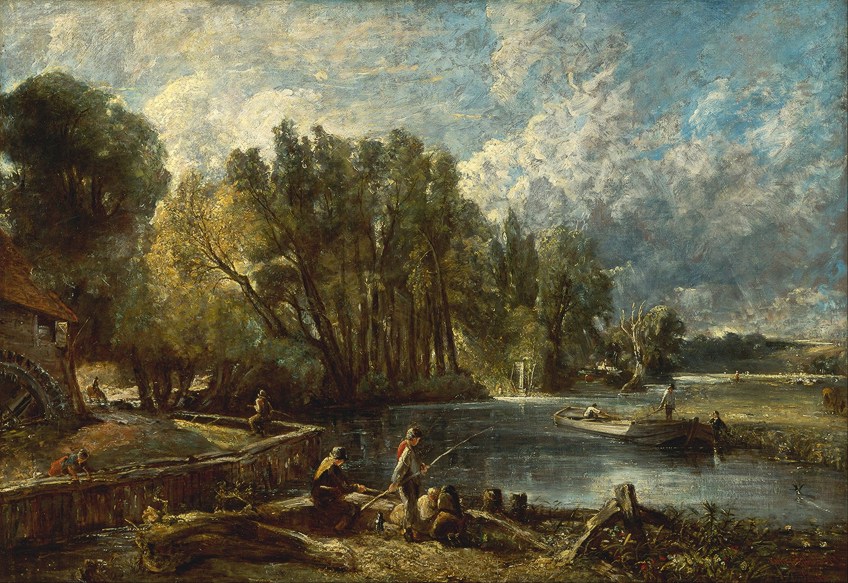
Important John Constable Artist Exhibitions
Although John Constable struggled to sell his paintings during his lifetime, this did not deter him from displaying them. Constable showed his artworks at plenty of art exhibitions, primarily in England and France. Two of his more noteworthy exhibitions will be discussed below.
Paris Salon (1824)
In 1824, a man named John Arrowsmith purchased two of John Constable’s paintings. These were The Hay Wain (1821) and View on the Stour near Dedham (1822). Arrowsmith, who was of British and French heritage, decided to enter the two paintings into the Paris Salon.
The French were enamored by Constable’s talent and originality.
So much so that he was awarded a gold medal by the king at the time, Charles X of France himself. Not only did this boost his career in France, but it also inspired many French artists to emulate his art style. For this reason, many consider this to be the most important exhibition he participated in during his lifetime.

Royal Academy of Arts (2021-2022)
Although this exhibition was held long after John Constable’s death, it is significant for two reasons. Firstly, Constable was a member of the Royal Academy himself. Not only did he study there, but he also lectured for them for a time. Thus, it is necessary for them to pay homage to him for the contributions he made to their establishment. Secondly, this exhibition is one of the largest displays of his works all in one venue. The reason this is so significant is that it is important that his works be introduced to the new generation in order to prolong his legacy.
The exhibition showcases a number of sketches, prints, watercolors, and oil paintings in order to give audiences a holistic view of his art.
John Constable Artworks
John Constable was an artist who created a large body of work throughout his lifetime. He utilized a variety of mediums including drawing, painting, and printmaking. This part of the article will give some insight into the artworks he created during his life.
Drawings
John Constable was known primarily for his landscape paintings. Before he created these, often using either oil or watercolor paints, he would sketch the area. However, there are few of his drawings still in existence, making them very valuable. Below is a list of drawings, which now belong to public or private collections.
- Self Portrait (1806)
- Salisbury Cathedral (1823)
- View on the River Severn at Worcester (1835)
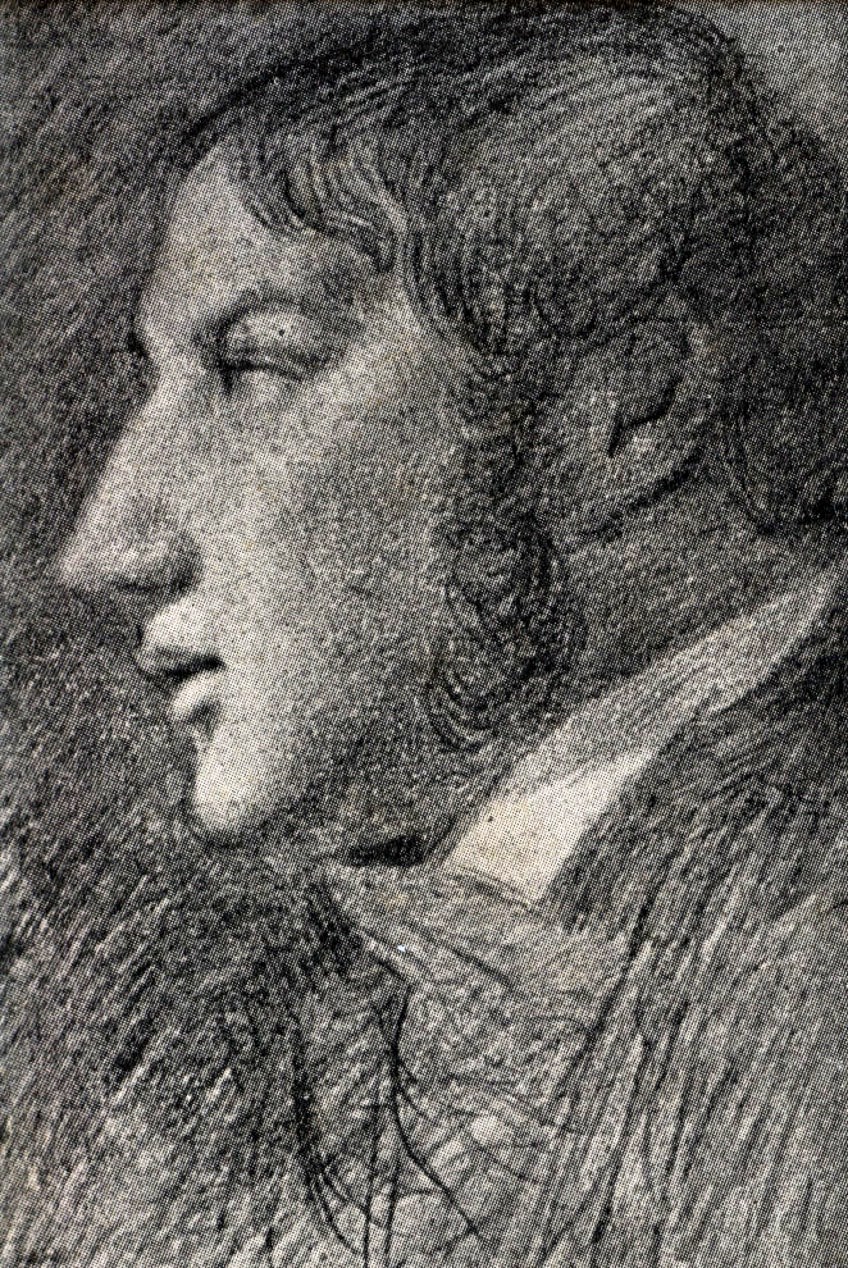
Paintings
John Constable created so many paintings during his career that it would be impossible to discuss them all. Thus, this section will focus on his most famous paintings, a series of six landscapes known as the “Six-Footers”.
| Title | Date | Dimensions (cm) | Medium |
| The White Horse | 1819 | 188 x 132 | Oil on canvas |
| Stratford Mill | 1820 | 183 x 127 | Oil on canvas |
| The Hay Wain | 1821 | 185 x 130 | Oil on canvas |
| View of the Stour near Dedham | 1822 | 188 cm x 130 | Oil on canvas |
| The Lock | 1824 | 142 x 117 | Oil on canvas |
| The Leaping Horse | 1825 | 188 cm x 130 | Oil on canvas |
John Constable’s paintings were original for a number of reasons but most obviously due to their size. At this time, landscapes were typically completed on a smaller scale than historical or biblical paintings. Constable wished to not only draw attention to his landscapes but also make them appear life-sized, as if one was looking out of a window onto the scene. Due to their immense size, he could not paint them en plein air as he typically would.
Therefore, he created smaller, yet not less impressive, versions of them to use as a reference in his studio.
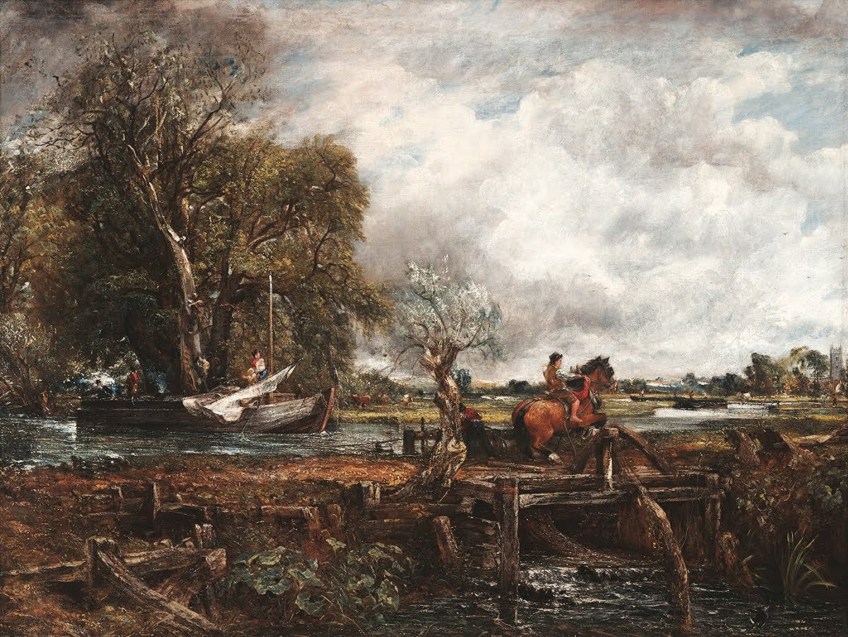
Each of the six “Six-Footers” displays a scene on the Stour River. This was located close to Constable’s home, where he spent a good deal of his life studying and sketching. This personal connection with the river allowed Constable to put his heart and soul into the paintings. One may also notice that whilst the first few paintings in the series depict serene scenes, the last two, The Lock and The Leaping Horse, contain more activity.
“The Lock” is the only painting in the series which is painted vertically, an unusual choice for a landscape painting.

Book Recommendations
John Constable was a fairly private man who just wanted a simple life. However, this did not mean that he was dull in the slightest. If you would like to read more about this interesting English artist, check out one of the book recommendations below.
Step into the world of John Constable, one of England’s most beloved landscape painters, through his own words in Memoirs of the Life of John Constable, Esq., R. A. This captivating book unveils Constable’s innermost thoughts, struggles, and triumphs, chronicling his artistic journey with unparalleled intimacy. Dive into the heart of the early 19th century and witness Constable’s relentless pursuit of capturing the essence of the English countryside, as he revolutionizes landscape painting forever. Discover the man behind the masterpieces, his passion, and his enduring legacy in this compelling narrative that brings history to life.
- Offers intimate access to the life of the renowned artist
- The memoirs contextualize Constable's life within the social, cultural, and artistic milieu of his time
- The book traces Constable's artistic development
The Early Paintings and Drawings of John Constable (1996) by Graham Reynolds
The Early Paintings and Drawings of John Constable was written by Graham Reynolds and published by Yale University Press in 1996. It is actually two books, one which contains a collection of 1370 Constable sketches and paintings, and another which contains background information and analyses on these artworks. This book contains beautiful prints of the artist’s work, many of which now belong to private collections.
- A discussion of all the paintings and drawings produced by Constable
- A beautiful two-volume set, with one of text and one of plates
- Describes and reproduces 1370 paintings and drawings in date order
John Constable: The Making of a Master (2014) by Mark Evans
John Constable: The Making of a Master was written by Mark Evans and published by the Victoria and Alfred Museum in 2014. The book focuses primarily on his painting techniques rather than his biography. The book also goes into detail about which artists Constable was inspired by as well as why he is an inspiration to many artists who followed him.
- Reconciles Constable's techniques with reverence for the masters
- Discusses how Constable assimilated the old masters' ideas
- Why Constable is such a powerful influence on contemporary artists
John Constable had a profound effect on the art of landscape painting. Unfortunately, he did not achieve widespread popularity or financial success during his time on earth. However, in the modern day, he is considered one of the most influential Romanticism painters in history. In 2005, his painting “The Hay Wain” was voted Britain’s second best-loved painting by the BBC, showing that his legacy is still going strong.
Frequently Asked Questions
What Was John Constable Known For?
John Constable was an English painter who primarily painted landscapes. Constable completely transformed how people looked at landscape painting, thought of previously as a lowly form of art. He pushed boundaries by using new techniques and painting on a much larger scale than was customary for landscapes at the time. His painting The Hay Wain (1821) was elected the second-best painting in British history by a 2005 survey.
How Much Is a John Constable Painting Worth?
In 2012, one of John Constable’s famous so-called Six-Footers The Lock (1824) sold for an incredible £22.4 million. The Lock was Constable’s most successful painting during his lifetime, being the only one to sell on the first day of its exhibition. It was bought by an innkeeper’s son named James Morrison for 150 guineas. Today, 150 guineas are equal to a measly £157.50.

Emma completed her Bachelor’s Degree in International Studies at the University of Stellenbosch. She majored in French, Political Science, and History. She graduated cum laude with a Postgraduate Diploma in Intercultural Communication. However, with all of these diverse interests, she became confused about what occupation to pursue. While exploring career options Emma interned at a nonprofit organization as a social media manager and content creator. This confirmed what she had always known deep down, that writing was her true passion.
Growing up, Emma was exposed to the world of art at an early age thanks to her artist father. As she grew older her interests in art and history collided and she spent hours pouring over artists’ biographies and books about art movements. Primitivism, Art Nouveau, and Surrealism are some of her favorite art movements. By joining the Art in Context team, she has set foot on a career path that has allowed her to explore all of her interests in a creative and dynamic way.
Learn more about the Art in Context Team.
Cite this Article
Emma, Littleton, “John Constable – The Life and Works of John Constable the Artist.” Art in Context. July 11, 2022. URL: https://artincontext.org/john-constable/
Littleton, E. (2022, 11 July). John Constable – The Life and Works of John Constable the Artist. Art in Context. https://artincontext.org/john-constable/
Littleton, Emma. “John Constable – The Life and Works of John Constable the Artist.” Art in Context, July 11, 2022. https://artincontext.org/john-constable/.


